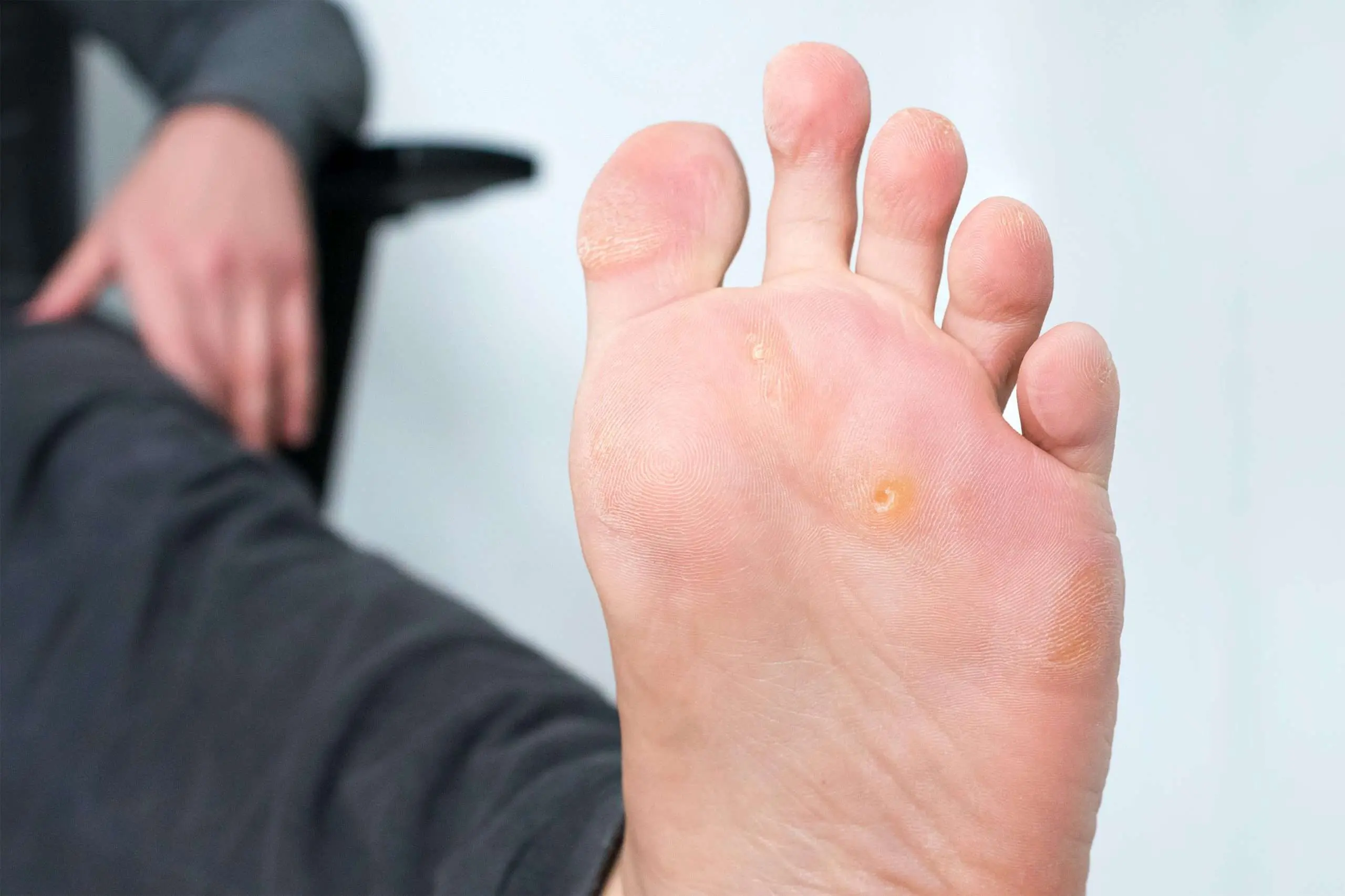
Foot corns create a spiky sensation that penetrates the skin. If left untreated, they can develop in sensitive areas of the foot and become very bothersome. However, foot corns can be easily removed, and they can even be avoided.
What exactly are foot corns?
The thickening of the skin that results from repeated friction is known as a corn. The places where corns are most likely to develop are the toes’ joints and the pressure points on the soles of the feet. Rough corns on the feet occasionally have a tiny black dot in the center. The inflammation may cause the skin around the callus to turn red. A foot deformity that causes pressure points in the shoe, extremely dry skin, or poorly fitting shoes can all be causes of corns. Once a corn has formed, it needs to be removed with a specific treatment. Thankfully, there are easy ways to avoid them.
How can I tell if I have corn on my feet?
It is important to distinguish corns from other common conditions even though they are a regular occurrence. On occasion, people might need help understanding what a corn skin is. Despite having a similar appearance, a plantar wart, callus, or corn will not be treated in the same way. Here’s how to distinguish between them to avoid mistakes.
A corn is a conical callus that develops under the foot’s sole or on the toes. It might have a tiny black dot in the middle, also referred to as a partridge eye.
While a wart is brought on by a virus, it is typically contracted by going barefoot in damp public places like swimming pools. Warts can grow on their own or cluster in several small formations anywhere on the foot.
Last but not least, calluses are just dry, thickened, painless skin that develops as a result of repeated rubbing. If the foot is not properly moisturized, it may become chapped.
How do I remove foot corns?
A foot corn can be taken off in several different ways. It can be removed most easily by filing it down. To remove the top layers of the corn, use a file or a pumice stone after soaking the foot in water to soften the skin. To prevent injury, be careful to do this gradually. Remember to moisturize your skin after this procedure to bring back its suppleness.
Foot corns can sometimes be successfully treated with some over-the-counter creams; ask your pharmacist for recommendations. Additionally, specific dressings are sold in pharmacies and work to gradually reduce and soften the corneal skin layer. The best course of action is to speak with your podiatrist, who can choose the best treatment to get rid of your corns without risk if you have diabetes or a condition that affects your blood circulation.
How to avoid foot corns?
Three common causes of corns include standing for extended periods of time, wearing inappropriate shoes, and having a foot deformity.
Deformities and friction can result from footwear that does not support the arch of the foot or that limits your feet’s range of motion. It is crucial to pick the appropriate shoes, especially if you stand or walk a lot. In addition to keeping your posture and lower limb alignment in check, good shoes will also prevent corns. Consider using breathable fabrics to reduce excessive sweating. In addition to producing unpleasant odors, excessive sweating is a favorable environment for the growth of bacteria.
Another important consideration is how clean your feet are. Small lesions, infections, and corns can develop on feet that have been neglected or kept far too dry. Make sure to thoroughly wash and dry your feet. Remove any dead skin with a file before applying a nourishing cream.
Would you like a precise diagnosis?
The podiatrists at FootNetwork clinics across all of Quebec offer podiatric evaluations to take care of your feet. Do you experience pain from a growth on your foot? Meet with one of our professionals to determine the cause of this discomfort and find the right solution for you.